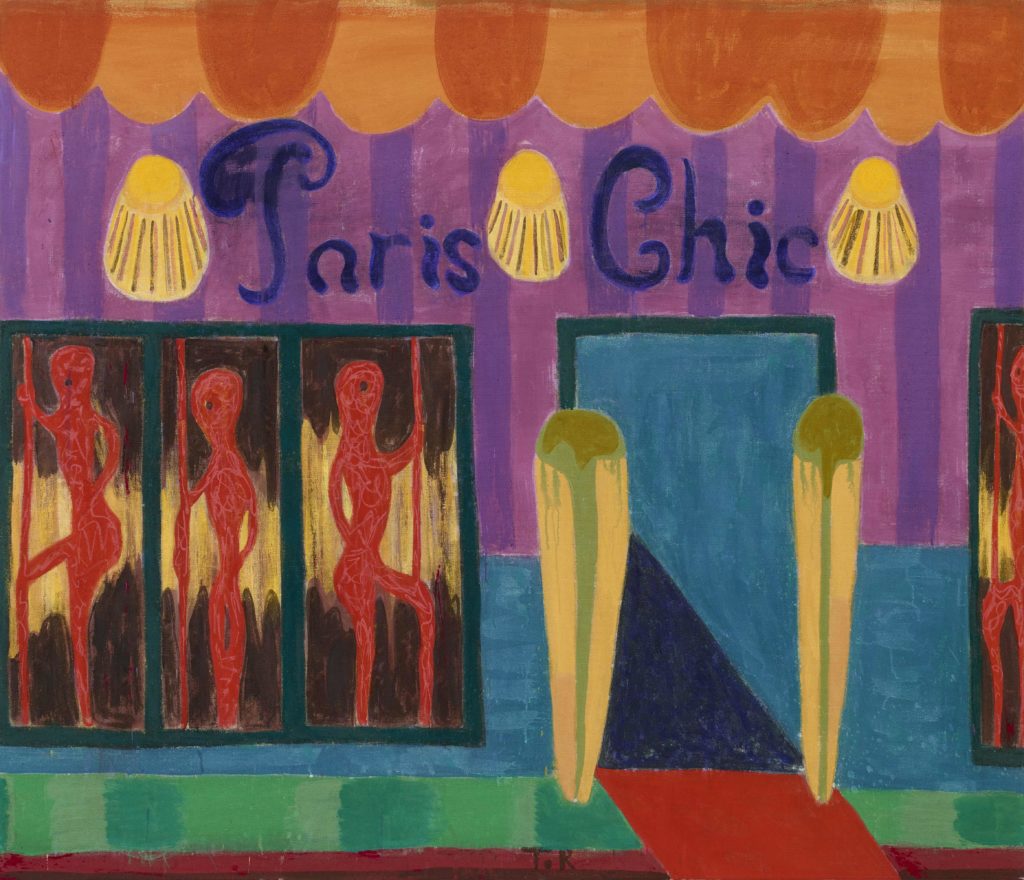The artist Tal R is breathing a sigh of relief today. A court in Denmark issued a ruling this morning essentially saving the painter’s 2017 work, Paris Chic, from being destroyed for the purpose of embellishing luxury wristwatches.
The case, which was heard by the Maritime & Commercial High Court in Copenhagen, centered on whether Dann Thorleifsson and Arne Leivsgard, co-founders of the high-end Kanske and Letho watch brands, could cut up Tal R’s painting Paris Chic—which the duo purchased just this past August for £70,000 ($90,506) from London’s Victoria Miro Gallery—in order to decorate watch faces for their products. Paris Chic comes from the Copenhagen-based artist’s 2017 series “Sexshops,” which depicts the facades of various sex shops from Paris to Berlin, Antwerp, Prague, and Tel Aviv.
Thorleiffson and Leivsgard’s plan, which they announced in October (a mere two months after acquiring the work), was to use fragments of the sliced-up canvas to adorn roughly 300 Letho watches, each to be priced at 10,000 Danish kroner ($1,486). Per his lawyer, Tal R argued that it is unacceptable “for someone to alter the work and then reintroduce it to the public domain, and particularly not for commercial reasons.”

Tal R, Paris Chic (2017). © Tal R. Courtesy the artist and Victoria Miro, London/Venice.
Yet, according to The Guardian, Thorleifsson and Leivsgard avidly defended their agenda, while complimenting Tal R in an oblique way. “We needed an artist that was esteemed by experts because we also needed to get a reaction,” Thorleifsson said. “If we just took a $100 canvas, no one would really care. It needed to be a true masterpiece.”
If the court ruled in their favor, the two had planned to destroy Paris Chic in a public forum—billing the scheduled desecration of Tal R’s painting, perhaps ironically, as a vernissage.
Tal R’s lawyer, Jørgen Permin, commented on the win in a statement to Artnet News, saying that everyone involved is “very pleased with the very clear decision of the Maritime & Commercial High Court, which ruled in our favour on all counts. We and Tal R hope it will mark the end of this case and that it will mean that Tal R and his fellow artists may avoid similar disputes in the future.” (Artnet News also reached out to Heidi Højmark Helveg, who represented Thorleifsson and Leivsgard, but did not hear back by press time.)
Unfortunately, such cases are not as unusual as one might think. In 2016, Ghanian artist Ibrahim Mahama was caught in a legal dispute with controversial art dealer/collector Stefan Simchowitz after he claimed that Simchowitz “mutilated” his jute sack works—said to be worth $4.5 million—“by cutting them up, and stretching and framing them as individual pieces to sell, all without any required written authorization.” (To be fair, Simchowitz wasn’t angling to turn Mahama’s artwork into a line of luxury handbags.) Details of the case remain mum, as the stipulations of the settlement reached in May 2016 remain confidential.









